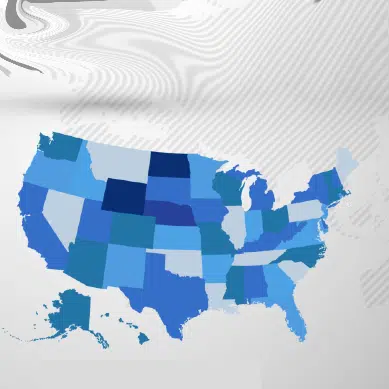The ever-increasing volume and speed of data flowing within your organization introduces opportunities and risks. While this data abundance can be advantageous for decision-making and business growth, it also introduces new vulnerabilities and potential attack avenues.
To mitigate the risks of data loss and ensure a safer environment, one of the recommended practices is to closely monitor and manage the quantity of digital information that your company retains and processes beyond its necessary lifespan. This practice is commonly referred to as data minimization.

What is Data Minimization?
The data minimization privacy principle focuses on reducing the collection, storage, and retention of personal data to the necessary minimum for a specific purpose. It is a fundamental principle of privacy and data protection.
Data minimization involves carefully assessing what data is truly necessary to achieve a particular objective and ensuring that only that specific data is collected and processed. The principle promotes limiting the scope of data collected, both in terms of the types of data and the volume of data collected.
By implementing data minimization, organizations can reduce privacy risks and enhance data security. It helps to mitigate potential harm to individuals in the event of a data breach or unauthorized access since there is less data available for compromise.
Data Minimization GDPR Alignment
Data minimization aligns with GDPR’s principle of purpose limitation, which states that personal data should only be used for the purposes for which it was collected.
Data Minimization Techniques
When gathering data, it is important to consider a set of questions for each piece of data you intend to collect:
- Is the individual aware that I am collecting this data?
- How do I plan to utilize this data?
- Does the individual understand the purpose behind collecting this data?
- Is there an alternative way to achieve the intended purpose without collecting this data?
- How long will I need to retain this data to fulfill the purpose?
By asking yourself these questions, you can gain clarity on the necessity of the data you collect at different stages, enabling you to determine what data can be safely deleted.
The Challenges AI Poses for data minimization
Data minimization is crucial in mitigating risks associated with the unnecessary storage of personal information by companies and their vendors. However, a new challenge arises as companies strive to comply with regulatory requirements for data disposal while simultaneously implementing AI and Big Data projects that necessitate substantial volumes of confidential data. This creates a tension that complicates data minimization efforts, especially when deciding how long to retain confidential data used to train an operational AI model.
Start Getting Value With
Centraleyes for Free
See for yourself how the Centraleyes platform exceeds anything an old GRC
system does and eliminates the need for manual processes and spreadsheets
to give you immediate value and run a full risk assessment in less than 30 days
Regulatory Requirements That Support Data Minimization
California’s CPRA
The law states that any information collected must be “reasonably necessary and proportionate to either the purposes for which it was collected or another disclosed purpose”
Colorado’s CPA
As per the CPA, “Controllers must assess and document the minimum types and amount of Personal Data needed for the stated processing purposes.”
Utah’s UCDPA
The law implies that businesses can only collect and store data that is reasonably relevant, necessary, and proportionate to its stated purpose.
Connecticut Data Privacy Act
Under the Connecticut Data Privacy Act, controllers must limit the collection of personal data to the minimum amount that is relevant and reasonably necessary for the specific purpose for which the data is processed.
Virginia’s VCDPA
The VCDPA requires controllers to limit data collection to what is adequate, relevant, and reasonably necessary for the disclosed purposes.
Data Minimization For Compliance with Data Privacy Laws
As new privacy laws place strict requirements on companies, implementin effective data minimization privacy controls becomes paramount. With the increasing complexity and unstructured nature of data, organizations must establish robust retention policies to efficiently identify and manage personal information.
Staying up-to-date with the latest regulations is crucial to ensure compliance and avoid penalties in the future.
By proactively embracing data minimization practices, enterprises can not only meet their legal obligations but also safeguard individuals’ privacy, foster trust, and mitigate the potential risks associated with data breaches. The time to prepare for compliance is now, setting the foundation for a responsible and secure data handling framework.
Schedule a demo today to see how Centraleyes automates and orchestrates data collection and the full data privacy lifecycle. Centraleyes frees up hours of siloed repetitive labor by seamlessly crosswalking data minimization controls between various regulatory requirements.
Start Getting Value With
Centraleyes for Free
See for yourself how the Centraleyes platform exceeds anything an old GRC
system does and eliminates the need for manual processes and spreadsheets
to give you immediate value and run a full risk assessment in less than 30 days





